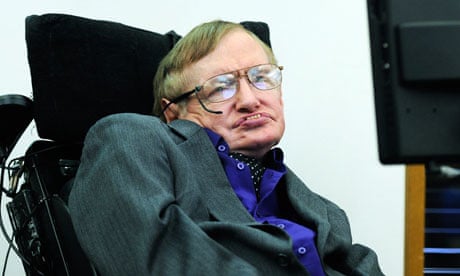By Troy Bramston
Scribe | $32.95
UNTIL the early months of 2010, any author approaching a publisher with a proposal to write a book about a crisis in the Australian Labor Party would have had difficulty gaining a hearing. As recently as the period between November 2007 and September 2008, Labor had been in office federally and in all eight states and territories. The most senior Liberal public office-holder in the country was probably the lord mayor of Brisbane. John Howard had been succeeded by Brendan Nelson, who made way for Malcolm Turnbull, who was in turn defeated by Tony Abbott. There was a thriving industry in books about the Liberal Party’s bleak present and uncertain future.
Yet Troy Bramston believes that Labor’s emerging crisis was perceptible even in the hour of victory. Early in his lively new book, Looking for the Light on the Hill: Modern Labor’s Challenges, he gives an account of the disappointment felt by many of the true believers at Kevin Rudd’s execrable election night victory speech in 2007. As Bramston adds pointedly, “it would be a sign of things to come.” Labor’s share of first-preference votes at that election, at around 43 per cent, was the second-lowest the party had ever attracted while still winning. For Bramston, this decline reflects the failures of “Labor’s lost decade” from 1996 until 2007, when it distanced itself from the successful Hawke and Keating legacy while neglecting party renewal. Labor’s crisis today, he says, is primarily one of identity and leadership. A once proud and well-led party animated by a clear sense of purpose has given way to a fearful and poorly led crew.
Bramston’s views should be taken seriously. A Labor insider, he was employed as Rudd’s speechwriter during 2007 – although he was not the author of that election night speech – and he has also worked for many years as a staffer for other Labor MPs in both opposition and government. But unlike many of those who make careers in the offices of Labor politicians, Bramston also has a deep knowledge of party history. In this sense, he is a commentator in the best traditions of the NSW Labor Party, which has long seemed to take its history and traditions more seriously than state branches have elsewhere. Looking for the Light on the Hill is crammed with references to the party and leaders of yesteryear; in comparison, the modern party is often found to be wanting. This gives the book a slightly nostalgic quality, but one mitigated by Bramston’s conviction that party renewal means taking inspiration from the past rather than reliving it.
Bramston’s method is to extract from Labor history what he sees as the essential and continuing goals, and then to argue for a reconstruction of the party’s mission around them. On the whole, a party that allowed itself to be guided by the renovated objective that Bramston outlines in his book would do Australia much good. It includes economic and social justice, environmental sustainability, equality of opportunity, nation-building, “creative and innovative diplomacy,” and the promotion of rights and liberties. And when he begins to explain how these broad goals might translate into specific policies, his commitment to a just and humane politics could not be clearer.
All the same, there is too little sense here of the historical contingency of most definitions of what the Labor Party stands for. Bramston quotes Susan Ryan, the former Hawke government minister: “Why does Labor exist? It has only been in recent years that we have needed to ask the question. A generation ago, and right back to our founding at the end of the nineteenth century, we knew the meaning and purpose of Labor. Labor is a social-democratic party.” But there were remarkably few true believers who would have thought to call Labor a “social-democratic party” before the 1970s. In the Australian context, “social democracy” seems to have emerged around then or a little later as a way of distinguishing the ambitious program of the Whitlam government – its gestures towards universalism in welfare provision and its embrace of the concerns of the new social movements, for instance – from old-style Labor’s supposedly narrower concern with how many “bob” a man got in his pay packet.
Similarly, most Labor people would not until recently have called themselves “centre-left.” I can’t remember hearing this term until the last few years and presume it is of fairly recent – and probably British or North American – coinage. Even “progressive,” another word Bramston favours, was probably insignificant until recently. It was used by the Victorian Labor Party, which called itself the “Progressive Political League” for a couple of years in the 1890s, but Victorian Labor was at that stage essentially a wing of the Liberal Party. Western Australian Labor also used it briefly, but it might not have been widely applied to the Labor Party again until it was picked up by Australian admirers of Tony Blair and the Third Way in the late 1990s.
IN ITS British context, the term was intended to present New Labour as the heir to the best traditions of English liberalism, with Blair as a latter-day Gladstone. In Australia, “progressive” has more often functioned as a means by which the Labor right, especially in New South Wales, could identify itself as something more noble than a machine for dispensing jobs and favours or a pathway into the lucrative world of private sector employment. “Part of the problem with Labor,” former NSW and national party secretary Karl Bitar told Bramston, “is that by the time many of our politicians and officials reach senior positions of power, they are no longer driven by the core policy values which brought them to be involved in politics in the first place.” Bitar is now employed as a lobbyist for James Packer’s gambling empire.
For at least a decade, Bramston has been a persistent critic of Labor’s socialisation objective – that is, of its formal commitment to “the democratic socialisation of industry, production, distribution and exchange, to the extent necessary to eliminate exploitation and other anti-social features in these fields.” He believes that the socialist objective should be dropped largely for two reasons. In the first place, socialism is a discredited ideal, and the socialisation objective no longer reflects the actual goals of party members. It is therefore a barrier to the kind of rethinking of its mission in which the party needs to engage. This position is defensible, although I also have sympathy with John Faulkner’s comment, quoted by Bramston: “It is a very long time since the socialist objective has won or lost Labor a vote in an election.” Most electors would not even know of the objective’s existence. As Bramston shows, Labor has quite a lot of problems at the moment; is it wise to alert the ignorant to something most see as an irrelevance?
Bramston’s analogy with Tony Blair’s successful effort to remove the British Labour Party’s famous Clause IV seems to me off the mark. Adopted in 1918, not long before its Australian counterpart took on its socialisation objective, Clause IV committed the British Labour Party to the “common ownership of the means of production, distribution, and exchange.” The context of Blair’s 1994 assault on this goal was totally different from the situation faced by the Australian Labor Party today. The Conservatives had been in office for fifteen years, the Labour Party had moved well to the left, especially under Michael Foot, and there were concerns about radical groups within the party, such as the Militant Tendency, which had recently been active in the anti–poll tax campaign. It would be an exaggeration to call Blair’s success in persuading the party to discard Clause IV as a tragedy. But the attempt to repeat it in Australia in 2011 might well be a farce.
Bramston also believes that the objective should be dropped because Labor is not and has never been a socialist party. But socialists have clearly been a presence in the Labor Party from the jump, and socialism made its mark on Labor’s way of viewing the world. Bramston is right to point out that there has always been much confusion about the meaning of socialism. But much the same might be said of “social liberalism,” “social democracy” and “labourism,” which he believes to form an amalgam that has constituted Labor philosophy over the last 120 years.
Whatever else they have disagreed about, socialists have usually believed in a more equal society. It is striking that when Bramston discusses “equality” in this book he seems to be referring primarily to equality of opportunity, a goal that Tories in both Britain and Australia usually find themselves able to endorse. Yet until the 1980s, one of the guiding principles of the Labor Party was surely that a more equal society was better than a less equal one. Here was part of socialism’s legacy for Labor, whose goal of greater equality was more ambitious than mere meritocracy. But the idea of equality began to break down in the 1950s and 1960s as mass consumerism offered ever wider circles of people easier access to a large range of desirable goods. By the early 1970s, in the context of continuing affluence, Whitlam was defining equality as equal access to government services – a noble goal, but one that evaded the problem of inequalities that did not have their basis in unequal access to public goods. By the 1980s, Labor leaders such as Hawke and Keating were no longer at all interested in arguments about how the economic cake was divided up, so long as it was sufficiently large to ensure that enough crumbs fell the way of the disadvantaged, either “naturally” or with a little help from government.
THAT was not the only “break” that occurred in the 1970s and 1980s. Labor’s strong support for White Australia gave way to non-discrimination and Asian engagement. Labor’s hard nationalism was replaced by a softer version closely aligned with multiculturalism. The party’s traditional support for the patriarchal family sustained by a male breadwinner’s wage gave way to acceptance and then an embrace of double-income families and gender equality. The traditional Labor preference for public ownership of major utilities and enterprises was superseded by a mania for privatisation. Support for high levels of spending gave way to austerity and balanced budgets. A powerful strain of sexual puritanism and moral conservatism decayed in the face of a rights agenda that may well soon extend to gay couples wishing to marry.
Like Bramston, I welcome many if not all of these changes. But my point is that if we are to find an answer to why a prime minister with the intellect of Kevin Rudd quickly found himself all over the shop, or why a politician as accomplished as Julia Gillard cannot find a register in which to address the nation, or why the Labor Party for the last generation has been unable to build up a coherent narrative about where it wishes to take the country, we might well need to look beyond the failures of the post-1996 Labor Party. We need to look harder at those dramatic changes in the very era of Labor achievement that Bramston celebrates. They have combined with deindustrialisation and globalisation to detach Labor from those 40 per cent of voters who used to stick by it hail, rain or shine.
Bramston nonetheless offers an astute diagnosis of the ills afflicting the modern Labor Party, as well as some ways in which the party might set about trying to resolve its problems. On some matters, such as his advocacy of a parliamentary leader elected by rank-and-file members (along the lines of arrangements in the British Labour Party I
discussed in Inside Story in August 2010), he moves well beyond the recommendations of the review carried out after the last federal election by John Faulkner, Bob Carr and Steve Bracks. He opposes a close relationship with the Greens; the compact the Gillard government signed with them is for him both a symptom and a cause of the identity crisis.
On the relationship of the party to the union movement, he is more cautious than Rodney Cavalier, who wants a massive reduction in union power so as to end union control of Labor. Bramston argues for retaining affiliated unions and even expanding union involvement in the party by providing, for example, more opportunities for unaffiliated bodies to participate. He does recognise that any significant effort to empower ordinary party members will come up against the obstruction of powerful vested interests, such as union bosses, faction leaders, sitting MPs and those who eventually wish to take their places. But he doesn’t really offer a way around this problem. Perhaps his failure to do so is consistent with his position that internal party reform matters less than sorting out the serious deficits in leadership and identity.
In this, Bramston is perhaps a creature of his culture and our time. Labor was founded as a radical democratic party; so much so that the first NSW Labor caucus didn’t even choose a leader, preferring a committee of management. The Labor Party has venerated its leaders but also been highly suspicious of them. Yet Bramston looks to the party leadership, not to the rank and file, for a solution to the problem of identity.
This is all quite understandable, for the rank and file is almost gone. But it might be that a party that needs to look to its leaders – professional politicians – for a sense of who it is, what it wants, and where it’s going, has already lost the battle. •
Frank Bongiorno teaches history at the Australian National University.
This article has been amended to include a correction in the reference to Rodney Cavalier (see author's note below).














